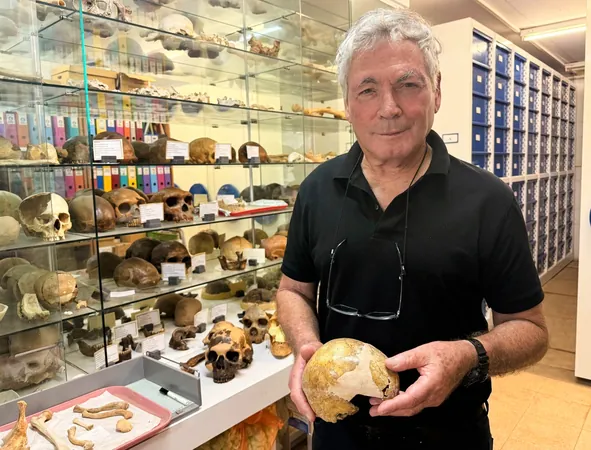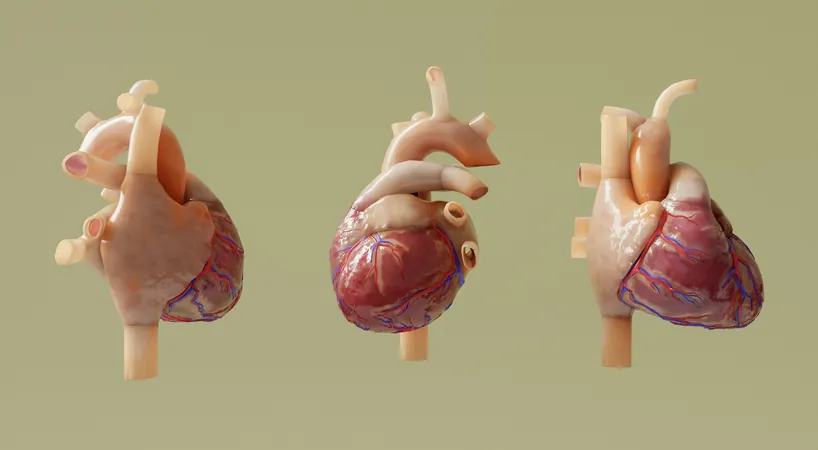
Revolutionary Discovery: Ancient Child’s Bones Hint at Earliest Interbreeding with Neanderthals
2025-08-26
Author: Nur
A Groundbreaking Find in Ancient Israel
In a stunning revelation, researchers have unveiled evidence suggesting that interactions between modern humans and Neanderthals occurred 100,000 years earlier than previously believed. Cutting-edge CT scans and 3D mapping technology have provided profound insights into the remains of a child discovered in Skhul Cave, Israel, buried approximately 140,000 years ago.
Unraveling Ancient Origins
This child, long thought to belong to a distinct species indigenous to the area, exhibits bone traits from both Homo sapiens and Neanderthals—indicating possible interbreeding. Ashkenazi Professor Israel Hershkovitz, who led the groundbreaking study published in the journal L’Anthropologie, highlights that this challenges the timeline of human evolution and interaction.
3D Mapping Technology Unleashes New Insights
Utilizing advanced 3D mapping, researchers meticulously examined the skull details that previous excavations had failed to reveal. By analyzing unique structures like the inner ear and cranial blood vessel imprints, they were able to ascertain the hybrid characteristics of this ancient child—something that was unimaginable without this innovative technology.
Debunking Myths of Hostility
Hershkovitz emphasizes that the findings paint a picture of peaceful coexistence between Homo sapiens and Neanderthals, countering the common belief that our ancestors brutally eliminated Neanderthals. Rather than being adversaries, the two groups nurtured a complex relationship that included cultural exchanges like tool-making and burial practices.
The Mystery of the Child's Legacy
Despite the lack of ancient DNA, experts like evolutionary biologist Pascal Gagneux suggest that the morphological evidence strongly supports the hybrid hypothesis. Key questions remain: Were both parents hybrids? Why was the child buried in a cave? These mysteries continue to intrigue researchers.
A Rich Tapestry of Ancient Life
Skhul Cave, among the oldest known sites for intentional burials, not only sheds light on the child but also hints at the broader interactions during a time when the region served as a bridge between Neanderthals and early humans. It’s a reminder that our ancestors may have shared more than just territory—they shared lives, cultures, and histories.


 Brasil (PT)
Brasil (PT)
 Canada (EN)
Canada (EN)
 Chile (ES)
Chile (ES)
 Česko (CS)
Česko (CS)
 대한민국 (KO)
대한민국 (KO)
 España (ES)
España (ES)
 France (FR)
France (FR)
 Hong Kong (EN)
Hong Kong (EN)
 Italia (IT)
Italia (IT)
 日本 (JA)
日本 (JA)
 Magyarország (HU)
Magyarország (HU)
 Norge (NO)
Norge (NO)
 Polska (PL)
Polska (PL)
 Schweiz (DE)
Schweiz (DE)
 Singapore (EN)
Singapore (EN)
 Sverige (SV)
Sverige (SV)
 Suomi (FI)
Suomi (FI)
 Türkiye (TR)
Türkiye (TR)
 الإمارات العربية المتحدة (AR)
الإمارات العربية المتحدة (AR)